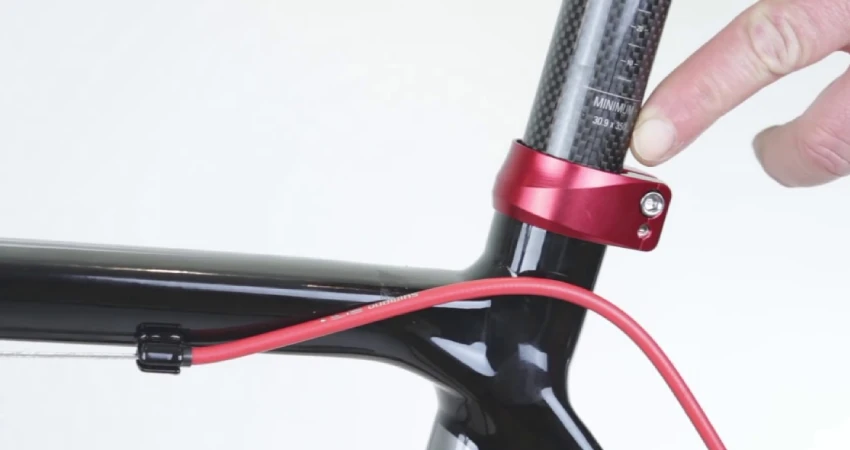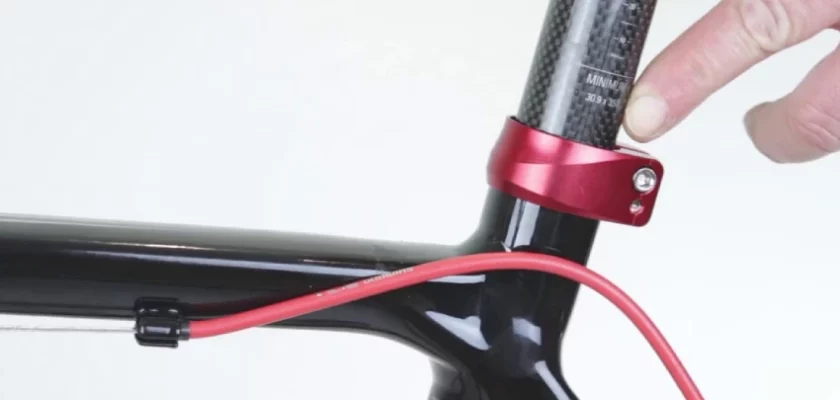Adjusting the specialized bike seat to achieve the perfect fit is essential for a comfortable and enjoyable ride. Whether you’re a seasoned cyclist or just starting out, knowing how to properly adjust the seat can make a significant difference in your overall cycling experience.
In this blog article, we will guide you through the step-by-step process of adjusting a specialized bike seat, ensuring that you can ride with optimum comfort and efficiency.
Have you ever experienced discomfort or pain while cycling? The culprit might be an improperly adjusted bike seat. Many riders overlook this crucial aspect, not realizing that it can lead to discomfort, affecting their performance and enjoyment on the road.
Luckily, you don’t need to be an expert to adjust your specialized bike seat correctly. With a few simple adjustments, you can find the perfect position that suits your body type and riding style. So, let’s dive into the world of bike seat adjustment and explore how to achieve an optimal fit for your specialized bike seat.
Adjust Specialized Bike Seat: The Ultimate Guide

When it comes to cycling, having a properly adjusted bike seat is crucial for comfort, performance, and injury prevention. Specialized bike seats are designed with the latest technology and ergonomics in mind, ensuring a comfortable ride. However, even the best seat will not provide optimal comfort without proper adjustment.
Step 1: Measure Your Sit Bone Width
Before adjusting your Specialized bike seat, it’s important to determine the width of your sit bones. Sit bones are the part of your pelvis that come into contact with the bike seat. To measure your sit bone width, follow these steps:
- Place a piece of corrugated cardboard or aluminum foil on a hard surface.
- Sit on the cardboard or foil, leaning slightly forward. Make sure to distribute your weight evenly.
- Stand up and measure the distance between the two deepest points of the indentations left by your sit bones. This measurement will give you an idea of the width of your sit bones.
Step 2: Adjust the Seat Height
Once you have determined your sit bone width, it’s time to adjust the seat height. Correct seat height is essential for proper leg extension and optimal power transfer. Follow these steps to adjust the seat height on your Specialized bike:
- Loosen the seat post clamp using an Allen key or a quick-release lever, depending on your bike’s design.
- Stand next to your bike, ensuring the bike is stable.
- With your feet shoulder-width apart, place your heel on the pedal while it’s at the lowest point in its rotation.
- Adjust the seat height so that your leg is fully extended but not locked. You should have a slight bend in your knee when the pedal is at the bottom of the stroke.
- Tighten the seat post clamp securely.
Step 3: Set the Seat Fore-Aft Position
The next adjustment is the fore-aft position of the seat. This adjustment ensures efficient pedaling and proper weight distribution between your hands, seat, and feet. Here’s how to set the fore-aft position of your Specialized bike seat:
- Loosen the seat clamp bolt located underneath the seat.
- Sit on the bike and place your feet on the pedals in a level riding position.
- Adjust the seat position forward or backward so that your forward knee aligns with the ball of your foot when the pedal is at the 3 o’clock position.
- Double-check your position using a plumb line. Align the string with the bony protrusion just below your kneecap, and it should drop straight to the ball of your foot.
- Tighten the seat clamp bolt securely.
Step 4: Fine-Tune the Seat Tilt
The tilt of your Specialized bike seat can significantly impact your comfort and performance. Use the following steps to adjust the seat tilt:
- Loosen the seat tilt adjustment bolts located at the front or rear of the seat.
- Sit on the bike and place your hands on the handlebars.
- Align the seat tilt to a neutral position by making sure it is neither overly tilted forwards nor backwards.
- Some riders prefer a slightly tilted seat for comfort, with the nose pointing slightly downward.
- Tighten the seat tilt adjustment bolts securely.
Step 5: Check Your Adjustment
After making the necessary adjustments, take a moment to ensure everything is set up correctly. Here are a few final checks to perform:
- Sit on the bike and pedal for a few minutes to assess your comfort level.
- Make sure you maintain a natural, relaxed pedaling motion.
- Check that the seat is stable and doesn’t wobble or move excessively.
- Ensure there is enough clearance between your knees and the handlebars when pedaling.
Tips for Optimal Bike Seat Adjustment
To help you achieve the best possible adjustment for your Specialized bike seat, consider the following tips:
- Start with small adjustments and test ride after each change to assess the impact.
- Do not overtighten adjustment bolts to prevent damaging the seat post or frame.
- Wear the cycling clothes you usually use when adjusting your seat to ensure accurate measurements.
- Consider seeking advice from a bike fitting professional for a more precise fit.
Frequently Asked Questions
1. How can I adjust the height of my Specialized bike seat?
Locate the seat post clamp and use an Allen key to loosen it. Adjust the seat height as desired, ensuring that the minimum insertion mark is still visible, and then tighten the clamp securely.
2. What is the correct angle for my Specialized bike seat?
Find the seat clamp underneath the seat and use an Allen key to loosen it. Adjust the seat angle by tilting it slightly forward or backward, then tighten the clamp securely.
3. How do I move my Specialized bike seat forward or backward?
Identify the seat rails and use an Allen key to loosen the bolts. Slide the seat along the rails to achieve the desired position and then tighten the bolts firmly.
Final Thoughts
In conclusion, adjusting a specialized bike seat is crucial for a comfortable and efficient riding experience. By following the steps mentioned in this article, riders can ensure that their seats are properly positioned, angled, and height-adjusted to match their body’s needs.
Remember to take into account individual preferences and riding style when making adjustments, as this can greatly enhance the overall biking experience. Whether it’s for a beginner or an experienced cyclist, knowing how to adjust a specialized bike seat is essential in maximizing comfort and preventing potential injuries.

